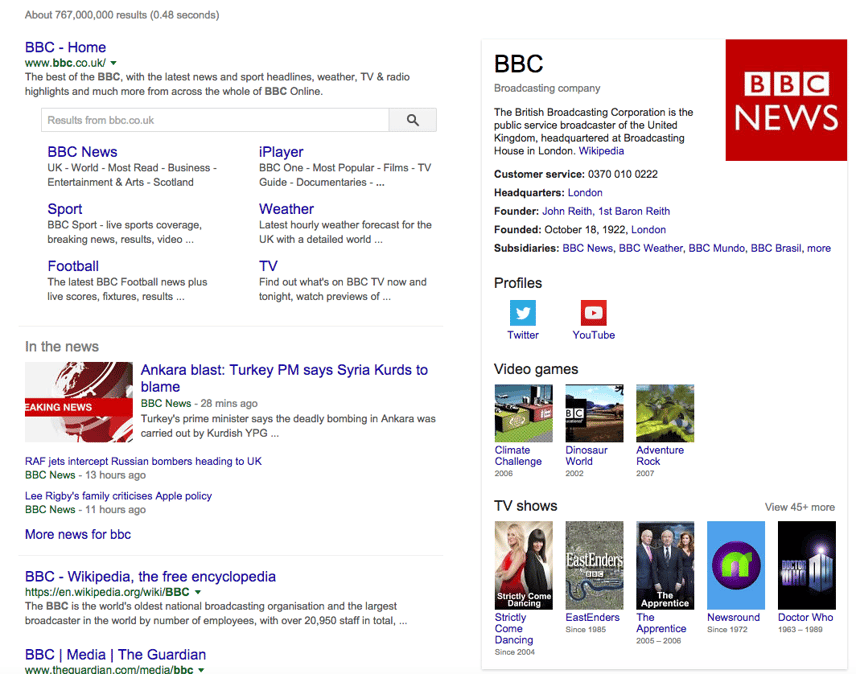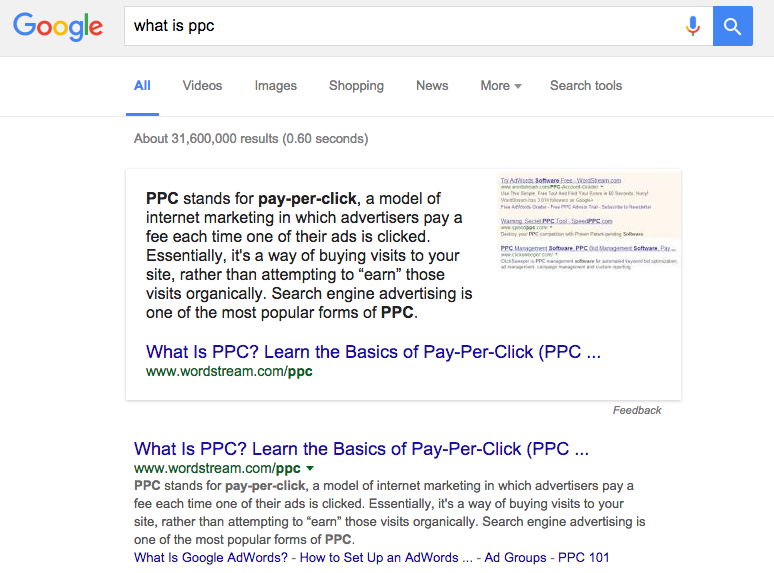
Get weekly
HubSpot updates
The Knowledge Graph is something that has been known about for quite a while, and gradually, we are beginning to see more and more of the effects this Google project has had on the SERPs. Having an understanding of how developments to the Knowledge Graph could affect your industry will be critical moving forward, as more and more SERPs (Search Engine Results Pages) begin to make use of the information in it.

(An example of a Knowledge Graph result in the SERPs)
A brief history of the Knowledge Graph
The Knowledge Graph is a method of displaying facts and information alongside typical search results. Launched all the way back in 2012, it aims was to provide users with information that answered their queries more quickly and efficiently than ever before.
The foundations for this were laid even further back than 2012. In 2010, Google acquired Metaweb, and with them, Freebase, a large database of community collated information. This, combined with the information gathered by Google from sources such as Wikipedia, The CIA World Factbook, and from structured data (schema) on sites formed the basis for the knowledge graph.
Officially launched in 2012, the Knowledge Graph was touted by Google as a way to help users get the answers they need, as well as jump start the user’s discovery of new information;.
“The Knowledge Graph enables you to search for things, people or places that Google knows about—landmarks, celebrities, cities, sports teams, buildings, geographical features, movies, celestial objects, works of art and more - and instantly get information that’s
relevant to your query.” - Amit Singhal, SVP, Engineering, Google
Over time, Google has developed more and more functions within the Knowledge Graph. It began with more graphical information and information that was related to the original query, helping to fuel the user’s discovery of new information, just as Google intended. The amount of available industries and topics that these results covered increased over time as well, as Google refined its algorithm and adapted the box in search results to provide the most relevant information to users.
Google later began to add an ‘instant answer’ box into the results. This box attempts to provide a quick answer to the query, as shown below.

These instant answers were tested, and then become a much more regular feature in search results in late 2014, as spotted in a study by Moz. These results are a clear sign of Google’s intent to efficiently answer user queries as quickly as possible.
The Knowledge Graph continues to be updated, providing new methods of satisfying user queries. This includes information about the schedules of sports teams, weather forecasts, currency conversions and much more.
Why is Google doing this?
I believe this is due to Google’s goal to become the ultimate personal assistant. Google’s expansion into self-driving cars and Nest suggests that Google intends to provide as much service to its users as possible, and the Knowledge Graph and instant answers provide a quick and efficient way, without the need for users to browse through other websites.
What does this mean for SEO?
The first reaction might be that with these answer boxes appearing in SERP’s you want to rank in, or already rank in, users may get the information they need without ever having to visit the site. However, with more and more functions being possible through instant answers, users may be soon be able to convert through them, filling in contact forms, making calls, or even making purchases through these forms.
With more and more information like this being displayed, it will become more important to ensure that data on sites is appropriately marked up with schema. This is what allows the Knowledge Graph to pull information from sites, and to display instant answers. As search results are able to display more advanced functions, similarly advanced schema will need to be in place to fill out these results.
Instant answers from the Knowledge Graph can represent both a threat and an opportunity, and by staying on top of them, and on top of developments in the field, you can use them to get an edge over the competition.

